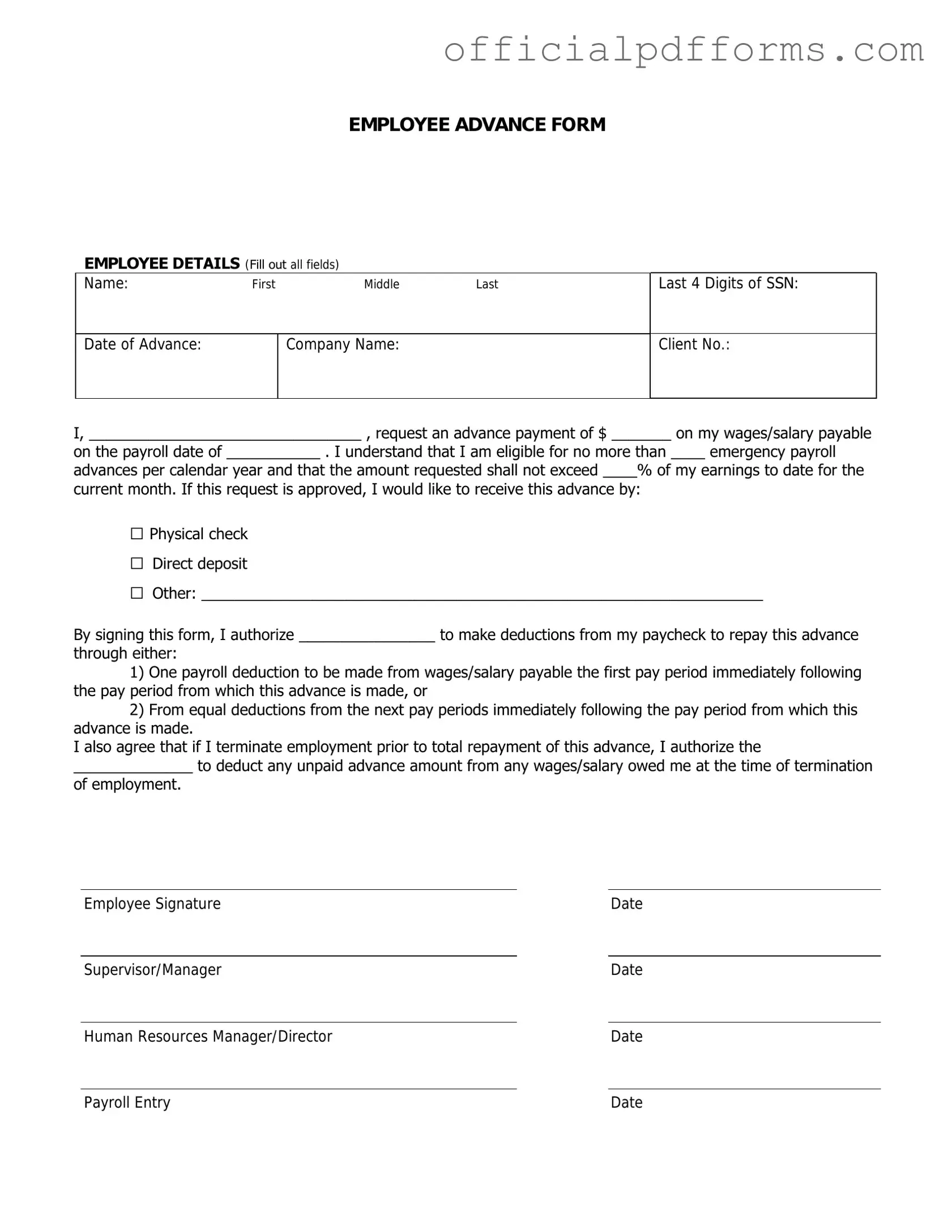The Employee Advance form is a document that allows employees to request an advance on their salary or wages. This advance can help employees manage unexpected expenses or financial emergencies. By submitting this form, employees can formally communicate their need for an advance to their employer.
Who is eligible to request an advance?
Generally, all employees who have been with the company for a certain period may be eligible to request an advance. Eligibility criteria can vary by organization, so it’s important to check with your HR department or review the company policy regarding advances.
To fill out the form, follow these steps:
-
Provide your personal information, including your name, employee ID, and department.
-
Clearly state the amount of advance you are requesting.
-
Explain the reason for the advance in a concise manner.
-
Sign and date the form to confirm your request.
Make sure to review your information for accuracy before submitting the form.
Typically, no additional documentation is required when submitting the Employee Advance form. However, some companies may ask for supporting documents, especially if the advance request is for a significant amount. It is advisable to check your company's policy for any specific requirements.
How long does it take to process the advance request?
The processing time for an advance request can vary. Most companies aim to review and respond to requests within a few business days. If your request is approved, the funds may be available in your next paycheck or as a separate payment, depending on company policy.
Will the advance be deducted from my future paychecks?
Yes, in most cases, the amount of the advance will be deducted from your future paychecks. The deduction schedule may differ based on your company's policy. Employees should clarify the repayment terms with HR to understand how and when the deductions will occur.
What if my request for an advance is denied?
If your request is denied, you will typically receive a notification explaining the reason for the denial. It’s important to communicate with your supervisor or HR department for further clarification. If necessary, you can consider reapplying in the future or exploring other financial assistance options available through the company.
